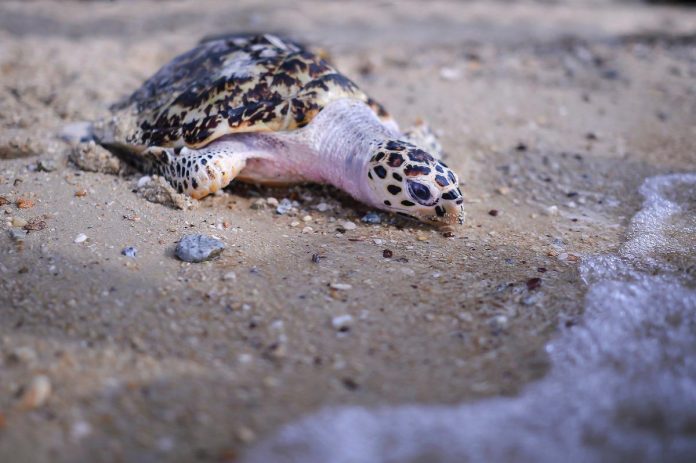PERHENTIAN: Sea turtles in Terengganu are facing increasing threats despite ongoing conservation efforts.
From fishing nets and boat strikes to the impact of rising sand temperatures on hatchlings, conservationists say more coordinated action is needed to protect the turtles, especially during their nesting season.
Fuze Ecoteer Outdoor Adventures co-founder Daniel Quilter said while egg poaching was once the primary threat to sea turtles, the dangers have shifted, with strandings now emerging as a major concern.
He said strandings refer to turtles that are found injured or dead, often floating at sea, as a result of human-related incidents.
“Among the most pressing issues are entanglement in fishing nets. Additionally, boat strikes near nesting islands have led to injuries and deaths, with an estimated 25 fatalities reported in recent months.”
Quilter added that March to May marks the peak season for strandings in Terengganu, as this coincides with their mating period, when turtles return to local waters, spend more time on the surface and become more vulnerable to threats.
“Enforcing speed limits on boats may be impractical, especially in marine tourism zones such as Redang Island or Perhentian Island.
“A boatman in Redang suggested installing buoy lines
in turtle foraging or mating
areas, which could protect
turtles by acting as a barrier to
divert boats.”
He said there are no regulations on speed limits in marine parks and even if such limits were introduced, enforcement would be a challenge.
“To make it work, you would need speed cameras and a way to (identify) offenders, which is more difficult to do at sea than
on land.”
He also said another growing concern is the effect on the gender of hatchlings due to rising sand temperatures. Since sea turtle gender is temperature-sensitive, warmer sands produce more females.
To understand and monitor this imbalance, Bubbles Dive Resort, the Marine Conservation and Research Organisation Malaysia (Pulihara) and Universiti Malaysia Terengganu, with support from Yayasan Sime Darby, have installed temperature data loggers at selected nest sites to help predict future hatchling gender ratios and population trends.
“We are currently seeing an upward trend in the number of green turtle nests in Terengganu. While there are good and bad years, the overall pattern is positive.
“Green turtles reach sexual maturity at about 25 years, so what we are seeing now is the result of the dedication of Fisheries Department rangers and conservationists who have been protecting and incubating eggs since the early 2000s,”
said Quilter.
He added that other species are also struggling, with olive ridley and leatherback turtles now considered “functionally extinct” in Terengganu, while hawksbill populations continue to decline, although a small number still remain.
He said community awareness, particularly in Perhentian Island, is strong as most locals are involved in tourism and understand that turtles are a major attraction.
“They know that protecting turtles and not eating them helps keep the island healthy and appealing to visitors.
“The community is supportive of conservation efforts by both NGOs and the Fisheries Department. If anyone finds a dead or injured turtle, they will usually contact us right away.”
Volunteer programmes such as the Perhentian Turtle Project, Kapas Turtle Project and the Bubbles Turtle Project and those run by Pulihara and the Sea Turtle Research Unit, engage the public in conservation work through egg collection, hatchery support and beach patrols.







